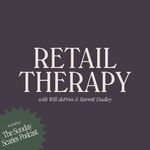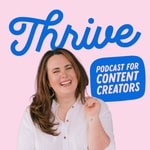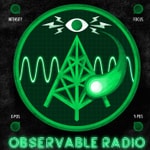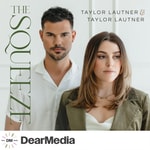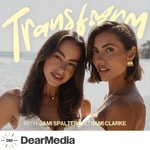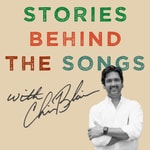Neuroscience: Amateur Hour – Détails, épisodes et analyse
Détails du podcast
Informations techniques et générales issues du flux RSS du podcast.
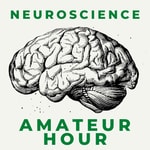
Neuroscience: Amateur Hour
Neuroscience: Amateur Hour
Fréquence : 1 épisode/29j. Total Éps: 32

Classements récents
Dernières positions dans les classements Apple Podcasts et Spotify.
Apple Podcasts
🇨🇦 Canada - lifeSciences
09/08/2025#18🇺🇸 États-Unis - lifeSciences
09/08/2025#12🇫🇷 France - lifeSciences
09/08/2025#30🇨🇦 Canada - lifeSciences
08/08/2025#15🇺🇸 États-Unis - lifeSciences
08/08/2025#13🇫🇷 France - lifeSciences
08/08/2025#29🇨🇦 Canada - lifeSciences
07/08/2025#16🇺🇸 États-Unis - lifeSciences
07/08/2025#15🇫🇷 France - lifeSciences
07/08/2025#26🇨🇦 Canada - lifeSciences
06/08/2025#25
Spotify
Aucun classement récent disponible
Liens partagés entre épisodes et podcasts
Liens présents dans les descriptions d'épisodes et autres podcasts les utilisant également.
See all- https://multiverseemployeehandbook.com
96 partages
- https://www.buymeacoffee.com/neuroscience
42 partages
Qualité et score du flux RSS
Évaluation technique de la qualité et de la structure du flux RSS.
See allScore global : 62%
Historique des publications
Répartition mensuelle des publications d'épisodes au fil des années.
Episode 32: The Neuroscience of Parkinson's Disease
Saison 2 · Épisode 32
jeudi 20 juin 2024 • Durée 23:49
Parkinson's disease is a neurodegenerative disorder characterized by uncontrollable movements, stiffness, and cognitive decline. Curious? Come learn more!
Please rate, review, and subscribe and if you have any questions, comments, concerns, queries, or complaints, please email me at neuroscienceamateurhour@gmail.com or DM me at NeuroscienceAmateurHour on Instagram.
Also if you have the means/desire to financially support this podcast - please go to https://www.buymeacoffee.com/neuroscience
I really appreciate it!!!
Citations and relevant papers are below.
National Institute on Aging. Parkinson’s Disease: Causes, Symptoms, and Treatments. National Institute on Aging.
Hogg E, Frank S, Oft J, Benway B, Rashid MH, Lahiri S. Urinary Tract Infection in Parkinson’s Disease. Journal of Parkinson’s Disease. 2022;12(3):743-757.
Yu J. Stages of Parkinson’s | Parkinson’s Foundation. www.parkinson.org. Published 2022.
Zhang ZX, Dong ZH, Román GC. Early Descriptions of Parkinson Disease in Ancient China. Archives of Neurology. 2006;63(5):782.
2-Minute Neuroscience: Direct Pathway of the Basal Ganglia. www.youtube.com.
2-Minute Neuroscience: Indirect Pathway of the Basal Ganglia. www.youtube.com.
Thanvi B, Lo N, Robinson T. Levodopa-induced dyskinesia in Parkinson’s disease: clinical features, pathogenesis, prevention and treatment. Postgraduate Medical Journal. 2007;83(980):384-388.
Zhang JF, Wang XX, Feng Y, Fekete R, Jankovic J, Wu YC. Impulse Control Disorders in Parkinson’s Disease: Epidemiology, Pathogenesis and Therapeutic Strategies. Frontiers in Psychiatry. 2021;12.
Hisahara S, Shimohama S. Dopamine Receptors and Parkinson’s Disease. International Journal of Medicinal Chemistry. 2011;2011:1-16.
Houston. Tmc.edu. Published October 20, 2020. https://nba.uth.tmc.edu/neuroscience/m/s3/chapter04.html
Ovallath S, Sulthana B. Levodopa: History and Therapeutic Applications. Annals of Indian Academy of Neurology. 2017;20(3):185-189.
Levodopa | Parkinson’s Foundation. www.parkinson.org. https://www.parkinson.org/living-with-parkinsons/treatment/prescription-medications/levodopa
Kelly MJ, Baig F, Hu MTM, Okai D. Spectrum of impulse control behaviours in Parkinson’s disease: pathophysiology and management. Journal of Neurology, Neurosurgery & Psychiatry. 2020;91(7):703-711.
Gerfen CR, Surmeier DJ. Modulation of Striatal Projection Systems by Dopamine. Annual Review of Neuroscience. 2011;34(1):441-466.
Sayare S. The Woman Who Could Smell Parkinson’s. The New York Times. https://www.nytimes.com/2024/06/14/magazine/parkinsons-smell-disease-detection.html. Published June 14, 2024.
Blandini F, Nappi G, Tassorelli C, Martignoni E. Functional changes of the basal ganglia circuitry in Parkinson’s disease. Progress in Neurobiology. 2000;62(1):63-88.
Lanciego JL, Luquin N, Obeso JA. Functional Neuroanatomy of the Basal Ganglia. Cold Spring Harbor Perspectives in Medicine. 2012;2(12):a009621-a0
The Multiverse Employee Handbook”The Multiverse Employee Handbook,” curated and produced by Robb Corrigan, is a...
Listen on: Apple Podcasts Spotify
Episode 31: The Neuroscience of Dreams
Saison 2 · Épisode 31
jeudi 25 janvier 2024 • Durée 23:38
Dreams are both scientifically fascinating and universal. Everyone dreams, at every age and they are often nonsensical, complex, and deeply subjective. How can you quantify something so personal in the activity of cells, circuits, and systems?
Let's find out together!
Please rate, review, and subscribe and if you have any questions, comments, concerns, queries, or complaints, please email me at neuroscienceamateurhour@gmail.com or DM me at NeuroscienceAmateurHour on Instagram.
Also if you have the means/desire to financially support this podcast - please go to https://www.buymeacoffee.com/neuroscience
I really appreciate it!!!
Citations and relevant papers are below!
Chip Brown. The Stubborn Scientist Who Unraveled A Mystery of the Night. Smithsonian. Published October 2003. https://www.smithsonianmag.com/science-nature/the-stubborn-scientist-who-unraveled-a-mystery-of-the-night-91514538/
Purves D, Augustine GJ, Fitzpatrick D, et al. The Possible Functions of REM Sleep and Dreaming. Nih.gov. Published 2016. https://www.ncbi.nlm.nih.gov/books/NBK11121/
Gott JA, Liley DTJ, Hobson JA. Towards a Functional Understanding of PGO Waves. Frontiers in Human Neuroscience. 2017;11. doi:https://doi.org/10.3389/fnhum.2017.00089
Senzai Y, Scanziani M. A cognitive process occurring during sleep is revealed by rapid eye movements. Science. 2022;377(6609):999-1004. doi:https://doi.org/10.1126/science.abp8852
Crick F, Mitchison G. The function of dream sleep. Nature. 1983;304(5922):111-114. doi:https://doi.org/10.1038/304111a0
Hobson JA, McCarley RW. The brain as a dream state generator: an activation-synthesis hypothesis of the dream process. The American journal of psychiatry. 1977;134(12):1335-1348. doi:https://doi.org/10.1176/ajp.134.12.1335
Caviglia G. Working on dreams, from neuroscience to psychotherapy. Research in Psychotherapy: Psychopathology, Process and Outcome. 2021;24(2). doi:https://doi.org/10.4081/ripppo.2021.540
Hobson, J. A. (1990). Activation, input source, and modulation: A neurocognitive model of the state of the brain-mind. In R. R. Bootzin, J. F. Kihlstrom, & D. L. Schacter (Eds.), Sleep and cognition (pp. 25–40). American Psychological Association. https://doi.org/10.1037/10499-002
Baird B, Mota-Rolim SA, Dresler M. The cognitive neuroscience of lucid dreaming. Neuroscience & Biobehavioral Reviews. 2019;100:305-323. doi:https://doi.org/10.1016/j.neubiorev.2019.03.008
Aspy DJ. Findings From the International Lucid Dream Induction Study. Frontiers in Psychology. 2020;11. doi:https://doi.org/10.3389/fpsyg.2020.01746
Soffer-Dudek N. Are Lucid Dreams Good for Us? Are We Asking the Right Question? A Call for Caution in Lucid Dream Research. Frontiers in Neuroscience. 2020;13. doi:https://doi.org/10.3389/fnins.2019.01423
Gao JX, Gao Y, Li XX, et al. The Ponto-Geniculo-Occipital (PGO) Waves in Dreaming: An Overvi
The Multiverse Employee Handbook”The Multiverse Employee Handbook,” curated and produced by Robb Corrigan, is a...
Listen on: Apple Podcasts Spotify
Episode 23: The Neuroscience of Smoking Cigarettes
Saison 1 · Épisode 23
jeudi 16 juin 2022 • Durée 16:36
Tobacco has a long and storied history but its effects on the modern world cannot be ignored. It was hailed as a cure to many ailments for years but as we understand more - we understand that its REALLY bad for you. Something like 80-90% of lung cancer cases are related to smoking along with a plethora of other diseases.
Curious? Want to learn more about the receptors and brain areas affected by nicotine, the active ingredient in cigarettes? Come and take a listen!
Also if you have the means/desire to financially support this podcast - please go to https://www.buymeacoffee.com/neuroscience
I really appreciate it!!!
Citations and relevant papers are below!
1907 - Handbook of American Indians north of Mexico, Part I; Frederick Webb Hodge. Internet Archives; Bureau of American Ethnology. Published online January 21, 2019. Accessed June 13, 2022. https://digitalcommons.csumb.edu/hornbeck_ind_3/3/
Baron JA. Beneficial effects of nicotine and cigarette smoking: the real, the possible and the spurious. British medical bulletin. 1996;52(1):58-73. doi:10.1093/oxfordjournals.bmb.a011533
Centers for Disease Control and Prevention. Health Effects of Smoking and Tobacco Use. Centers for Disease Control and Prevention. Published February 9, 2017. https://www.cdc.gov/tobacco/basic_information/health_effects/index.htm#:~:text=Smoking%20causes%20cancer%2C%20heart%20disease
Psychopharmacology 3e Web Box 13.1 - Pharmacology in Action: Why Do Tobacco Plants Make Nicotine? learninglink.oup.com. Accessed June 13, 2022. https://learninglink.oup.com/access/content/psychopharmacology-3e-student-resources/psychopharmacology-3e-web-box-13-1-pharmacology-in-action-why-do-tobacco-plants-make-nicotine
PubChem. Nicotine. Nih.gov. Published 2019. https://pubchem.ncbi.nlm.nih.gov/compound/nicotine
Holz RW, Fisher SK. Synaptic Transmission. Basic Neurochemistry: Molecular, Cellular and Medical Aspects 6th edition. Published online 1999. https://www.ncbi.nlm.nih.gov/books/NBK27911/
Hogg RC, Raggenbass M, Bertrand D. Nicotinic acetylcholine receptors: from structure to brain function. Reviews of Physiology, Biochemistry and Pharmacology. 2003;147:1-46. doi:10.1007/s10254-003-0005-1
Taly A, Corringer PJ, Guedin D, Lestage P, Changeux JP. Nicotinic receptors: allosteric transitions and therapeutic targets in the nervous system. Nature Reviews Drug Discovery. 2009;8(9):733-750. doi:10.1038/nrd2927
Abuse NI on D. How does tobacco deliver its effects? National Institute on Drug Abuse. https://nida.nih.gov/publications/research-reports/tobacco-nicotine-e-cigarettes/how-does-tobacco-deliver-its-effects
Chen X, Stacy A, Zheng H, et al. Sensations from initial exposure to nicotine predicting adolescent smoking in China: A potential measure of vulnerability to nicotine. Nicotine & Tobacco Research. 2003;5(4):455-463. doi:10.1080/14622200307239
Laviolette SR, van der Kooy D. The neurobiology of nicotine addiction: bridging the gap from molecules to behaviour. Nature Reviews Neuroscience. 2004;5(1):55-65. doi:10.1038/nrn1298
Marshall AM, Heffernan T. Smoking harms not just your physical health, but your mental health too. The Conversation. https://theconversation.com/smoking-harms-not-just-your-physical-health-but-your-mental-health-too-69021#:~:text=Long%2Dterm%20smoki
Episode 22: The Neuroscience of Speech Production
Saison 1 · Épisode 22
vendredi 10 juin 2022 • Durée 12:33
So this week’s episode is all about speech production. Speech is a fundamental way of communicating our needs, desires, threats, resources, etc to our conspecifics. But do you know about the circuits and muscles and brain regions responsible for our ability to physically produce speech?
Curious? Come and take a listen!
Please rate, review, and subscribe and if you have any questions, comments, concerns, queries, or complaints, please email me at neuroscienceamateurhour@gmail.com or DM me at NeuroscienceAmateurHour on Instagram.
Citations and relevant papers below:
Birds Raised In Complete Isolation Evolve “Normal” Species Song Over Generations. ScienceDaily. Accessed June 6, 2022. https://www.sciencedaily.com/releases/2009/05/090503132617.htm
Human language may have evolved to help our ancestors make tools. www.science.org. https://www.science.org/content/article/human-language-may-have-evolved-help-our-ancestors-make-tools
Ludlow CL. Central nervous system control of the laryngeal muscles in humans. Respiratory physiology & neurobiology. 2005;147(2-3):205-222. doi:10.1016/j.resp.2005.04.015
Petko B, Tadi P. Neuroanatomy, Nucleus Ambiguus. PubMed. Published 2022. Accessed June 6, 2022. https://www.ncbi.nlm.nih.gov/books/NBK547744/#:~:text=The%20nucleus%20ambiguus%20is%20the
Guy-Evans O. Motor Cortex Function and Location | Simply Psychology. www.simplypsychology.org. Published September 8, 2021. https://www.simplypsychology.org/motor-cortex.html#:~:text=The%20motor%20cortex%20is%20an
Simonyan K. The Laryngeal Motor Cortex: Its Organization and Connectivity. Current opinion in neurobiology. 2014;0:15-21. doi:10.1016/j.conb.2014.05.006
Kearney E, Guenther FH. Articulating: the neural mechanisms of speech production. Language, Cognition and Neuroscience. 2019;34(9):1214-1229. doi:10.1080/23273798.2019.1589541
@neurochallenged. Know Your Brain: Broca’s Area. @neurochallenged. https://neuroscientificallychallenged.com/posts/know-your-brain-brocas-area
University of California San Francisco. Speech & Language. Memory and Aging Center. Published 2019. https://memory.ucsf.edu/symptoms/speech-language
Episode 21: The Neuroscience of Neglect: The Bucharest Project
Saison 1 · Épisode 21
jeudi 2 juin 2022 • Durée 16:15
In 1989, Romanian dictator Nicolae Ceausescu was overthrown and the rest of the world discovered that over 170,000 Romanian children were being kept in impoverished institutions and orphanages.
These children were raised, not by loving parents or guardians, but by the metal bars of their beds and impersonal nurses. This neglect resulted in severe, lifetime, neurological issues including altered structure, function, and connectivity among different brain regions important for integrating complex information, including cognitive, social, and emotional competencies.
Curious about the decades-long project that followed these children for 21 years and documented the adverse effects of neglect on the developing brain? Come and take a listen!
Please rate, review, and subscribe and if you have any questions, comments, concerns, queries, or complaints, please email me at neuroscienceamateurhour@gmail.com or DM me at NeuroscienceAmateurHour on Instagram.
Citations and relevant papers below:
Weir K. https://www.apa.org/monitor/2014/06/neglect. www.apa.org. Published June 2014. https://www.apa.org/monitor/2014/06/neglect
Greene MF. 30 years ago, Romania deprived thousands of babies of human contact. The Atlantic. Published June 23, 2020. https://www.theatlantic.com/magazine/archive/2020/07/can-an-unloved-child-learn-to-love/612253/
Publications. www.bucharestearlyinterventionproject.org. Accessed May 21, 2022. https://www.bucharestearlyinterventionproject.org/publications
The Science of Neglect: The Persistent Absence of Responsive Care Disrupts the Developing Brain. https://developingchild.harvard.edu/wp-content/uploads/2012/05/The-Science-of-Neglect-The-Persistent-Absence-of-Responsive-Care-Disrupts-the-Developing-Brain.pdf
Teicher MH, Samson JA, Anderson CM, Ohashi K. The effects of childhood maltreatment on brain structure, function and connectivity. Nature Reviews Neuroscience. 2016;17(10):652-666. doi:10.1038/nrn.2016.111
Teicher MH, Dumont NL, Ito Y, Vaituzis C, Giedd JN, Andersen SL. Childhood neglect is associated with reduced corpus callosum area. Biological Psychiatry. 2004;56(2):80-85. doi:10.1016/j.biopsych.2004.03.016
FeaturedGeneticsNeurosciencePsychology·January 19, 2021. Childhood Neglect Leaves Generational Imprint. Neuroscience News. Published January 19, 2021. https://neurosciencenews.com/childhood-neglect-generational-17597/
Keim B. How Childhood Neglect Stunts the Brain. Wired. Accessed June 1, 2022. https://www.wired.com/2012/09/neuroscience-of-neglect/
Episode 20: The Neuroscience of Bipolar Disorder
Saison 1 · Épisode 20
jeudi 19 mai 2022 • Durée 15:35
Are you curious about the neural activity and neurotransmitters involved in these sudden shifts in mood? Come and take a listen to Episode 20!
Please rate, review, and subscribe and if you have any questions, comments, concerns, queries, or complaints, please email me at neuroscienceamateurhour@gmail.com or DM me at NeuroscienceAmateurHour on Instagram.
Citations below:
Bipolar disorder - Symptoms and causes. Mayo Clinic. https://www.mayoclinic.org/diseases-conditions/bipolar-disorder/symptoms-causes/syc-20355955#:~:text=Overview
National Alliance on Mental Illness. Bipolar disorder | NAMI: National Alliance on Mental Illness. nami.org. Published August 2017. https://www.nami.org/About-Mental-Illness/Mental-Health-Conditions/Bipolar-Disorder
How Is Bipolar Disorder Diagnosed? WebMD. Accessed May 17, 2022. https://www.webmd.com/bipolar-disorder/guide/bipolar-disorder-diagnosis#091e9c5e800091a5-1-1
Craddock N, Jones I. Genetics of bipolar disorder. Journal of Medical Genetics. 1999;36(8):585-594. doi:10.1136/jmg.36.8.585
Barnett JH, Smoller JW. The genetics of bipolar disorder. Neuroscience. 2009;164(1):331-343. doi:10.1016/j.neuroscience.2009.03.080
Ahmed NY, Knowles R, Dehorter N. New Insights Into Cholinergic Neuron Diversity. Frontiers in Molecular Neuroscience. 2019;12. doi:10.3389/fnmol.2019.00204
van Enkhuizen J, Janowsky DS, Olivier B, et al. The catecholaminergic-cholinergic balance hypothesis of bipolar disorder revisited. European journal of pharmacology. 2015;753:114-126. doi:10.1016/j.ejphar.2014.05.063
Keck PE, McElroy SL, Arnold LM. BIPOLAR DISORDER. Medical Clinics of North America. 2001;85(3):645-661. doi:10.1016/s0025-7125(05)70334-5
Machado-Vieira R, Manji HK, Zarate Jr CA. The Role of Lithium in the Treatment of Bipolar disorder: Convergent Evidence for Neurotrophic Effects as a Unifying Hypothesis. Bipolar Disorders. 2009;11:92-109. doi:10.1111/j.1399-5618.2009.00714.x
Malhi GS, Tanious M, Das P, Coulston CM, Berk M. Potential Mechanisms of Action of Lithium in Bipolar Disorder. CNS Drugs. 2013;27(2):135-153. doi:10.1007/s40263-013-0039-0
Episode 19: The Neuroscience of your Ears and Super Loud Rock Concerts
Saison 1 · Épisode 19
jeudi 12 mai 2022 • Durée 12:00
This week, I want to talk about your ears and how going to super loud concerts can impact your ability to hear. You might be thinking wait - ears aren’t brains. But the way we process sound in our ears is a part of the peripheral nervous system so I say close enough!
Come and listen to learn a little bit more about your auditory system, your peripheral nervous system, hair cells, and the absolutely insane feat of biological engineering that allows for sound to go from your surroundings to your brain.
Please rate, review, and subscribe and if you have any questions, comments, concerns, queries, or complaints, please email me at neuroscienceamateurhour@gmail.com or DM me at NeuroscienceAmateurHour on Instagram.
Citations below:
The Physics Classroom. Sound Waves as Pressure Waves. Physicsclassroom.com. Published 2019. https://www.physicsclassroom.com/class/sound/u11l1c.cfm
How the Ear Works. www.hopkinsmedicine.org. https://www.hopkinsmedicine.org/health/conditions-and-diseases/how-the-ear-works#:~:text=The%20Inner%20Ear
Petitpré C, Wu H, Sharma A, et al. Neuronal heterogeneity and stereotyped connectivity in the auditory afferent system. Nature Communications. 2018;9(1). doi:10.1038/s41467-018-06033-3
Purves D, Augustine GJ, Fitzpatrick D, et al. The Auditory Cortex. Nih.gov. Published 2016. https://www.ncbi.nlm.nih.gov/books/NBK10900/
Purves D, Augustine GJ, Fitzpatrick D, et al. The Inner Ear. Nih.gov. Published 2018. https://www.ncbi.nlm.nih.gov/books/NBK10946/
Ruggero MA. Responses to sound of the basilar membrane of the mammalian cochlea. Current Opinion in Neurobiology. 1992;2(4):449-456. doi:10.1016/0959-4388(92)90179-o
Wagner EL, Shin JB. Mechanisms of Hair Cell Damage and Repair. Trends in Neurosciences. 2019;42(6):414-424. doi:10.1016/j.tins.2019.03.006
Youm I, Li W. Cochlear hair cell regeneration: an emerging opportunity to cure noise-induced sensorineural hearing loss. Drug Discovery Today. 2018;23(8):1564-1569. doi:10.1016/j.drudis.2018.05.001
Santaolalla F, Salvador C, Martínez A, Sánchez JM, del Rey AS. Inner ear hair cell regeneration: A look from the past to the future. Neural Regeneration Research. 2013;8(24):2284-2289. doi:10.3969/j.issn.1673-5374.2013.24.008
Episode 18: The Neuroscience of Too Much Social Media
Saison 1 · Épisode 18
jeudi 5 mai 2022 • Durée 17:02
Social media is omnipresent. Mindless scrolling through TikTok and Instagram reels is just a part of our daily lives now. Whether it's cat videos, funny dances, or cool outfits, online content fills our excess time, entertains us, and keeps us connected with our friends and the people we look up to. As my housemate says, sometimes, we’re living in the REEL world, not the REAL world.
But it's also no secret that too much social media is not very good for our psyche and our brains. Curious why? Come and listen to learn a little bit more about the neuroscience of spending tooooooo much time on InstaSnapTok.
Please rate, review, and subscribe and if you have any questions, comments, concerns, queries, or complaints, please email me at neuroscienceamateurhour@gmail.com or DM me at NeuroscienceAmateurHour on Instagram.
Citations below:
Börchers S. Your Brain on Instagram, TikTok, & Co – The Neuroscience of Social Media. Published June 29, 2020. https://biologista.org/2020/06/29/your-brain-on-instagram-tiktok-co-the-neuroscience-of-social-media/
Montag C, Markowetz A, Blaszkiewicz K, et al. Facebook usage on smartphones and gray matter volume of the nucleus accumbens. Behavioral Brain Research. 2017;329:221-228. doi:10.1016/j.bbr.2017.04.035
Arias-Carrión O, Stamelou M, Murillo-Rodríguez E, Menéndez-González M, Pöppel E. Dopaminergic reward system: a short integrative review. International Archives of Medicine. 2010;3(1):24. doi:10.1186/1755-7682-3-24
Jan M, Soomro S, Ahmad N. Impact of social media on self-esteem. Ssrn.com. Published August 31, 2017. https://papers.ssrn.com/sol3/papers.cfm?abstract_id=3030048
Pittman M, Reich B. Social media and loneliness: Why an Instagram picture may be worth more than a thousand Twitter words. Computers in Human Behavior. 2016;62:155-167. doi:10.1016/j.chb.2016.03.084
Will GJ, Rutledge RB, Moutoussis M, Dolan RJ. Neural and computational processes underlying dynamic changes in self-esteem. FeldmanHall O, ed. eLife. 2017;6:e28098. doi:10.7554/eLife.28098
Cacioppo JT, Cacioppo S. The growing problem of loneliness. The Lancet. 2018;391(10119):426. doi:10.1016/s0140-6736(18)30142-9
Chunliang Feng, Li Wang, Ting Li, Pengfei Xu, Connectome-based individualized prediction of loneliness, Social Cognitive and Affective Neuroscience, Volume 14, Issue 4, April 2019, Pages 353–365, https://doi.org/10.1093/scan/nsz020
Alkozei A, Smith R, Pisner DA, et al. Exposure to Blue Light Increases Subsequent Functional Activation of the Prefrontal Cortex During Performance of a Working Memory Task. Sleep. 2016;39(9):1671-1680. doi:10.5665/sleep.6090
Episode 16: The Neuroscience of Mad Cow Disease
Saison 1 · Épisode 16
jeudi 14 avril 2022 • Durée 15:59
When I was a kid, I thought two things were going to be much bigger problems in my life than they actually are - quicksand and mad cow disease.
Turns out that they aren't but mad cow disease is still the stuff of science-fiction nightmares. Mad cow disease is caused by the spread of prions, proteins that weaponize our own cells against us and cause proteins to misfold and aggregate, slowly killing neurons throughout the brain. The disease is characterized by rapid and fatal neurodegeneration.
Want to get the shit scared out of you by learning about the truth behind mad cow disease? Come and listen!
Please rate, review, and subscribe and if you have any questions, comments, concerns, queries, or complaints, please email me at neuroscienceamateurhour@gmail.com or DM me at NeuroscienceAmateurHour on Instagram.
Citations below:
About BSE BSE (Bovine Spongiform Encephalopathy). Centers for Disease Control and Prevention. Published 2019. https://www.cdc.gov/prions/bse/about.html
Legname G. Elucidating the function of the prion protein. True HL, ed. PLOS Pathogens. 2017;13(8):e1006458. doi:10.1371/journal.ppat.1006458
Jung MJ, Pistolesi D, Panà A. Prions, prion diseases and decontamination. Igiene E Sanita Pubblica. 2003;59(5):331-344. https://pubmed.ncbi.nlm.nih.gov/14981553/
Lanska DJ. The mad cow problem in the UK: risk perceptions, risk management, and health policy development. Journal of Public Health Policy. 1998;19(2):160-183. Accessed April 11, 2022. https://pubmed.ncbi.nlm.nih.gov/9670700/
MRI used to detect vCJD. CMAJ: Canadian Medical Association Journal. 2000;163(3):324. Accessed April 11, 2022. https://www.ncbi.nlm.nih.gov/pmc/articles/PMC80326/
Macfarlane RG, Wroe SJ, Collinge J, Yousry TA, Jäger HR. Neuroimaging findings in human prion disease. Journal of Neurology, Neurosurgery, and Psychiatry. 2007;78(7):664-670. doi:10.1136/jnnp.2006.094821
NHS Choices. Overview - Creutzfeldt-Jakob disease. NHS. Published 2019. https://www.nhs.uk/conditions/creutzfeldt-jakob-disease-cjd/
Mead S, Khalili-Shirazi A, Potter C, et al. Prion protein monoclonal antibody (PRN100) therapy for Creutzfeldt–Jakob disease: evaluation of a first-in-human treatment programme. The Lancet Neurology. 2022;21(4):342-354. doi:10.1016/s1474-4422(22)00082-5
Episode 15: The Neuroscience of Pheromones
Saison 1 · Épisode 15
jeudi 31 mars 2022 • Durée 14:38
For the low, low price of $15.95 on Amazon, you can purchase a little spray bottle of pheromones that supposedly will trigger "animal attraction" in your partner. But is it true???
Pheromones are a well-known system of communicating territory, alarms, and sexual needs to other animals but is this system present in humans? We know that smell is an important component of sexual attraction and arousal but human beings seem to lack both the organ and brain region needed to process pheromone information. But maybe???
If you're curious, come and listen to learn a little bit more about what's happening upstairs!
Please rate, review, and subscribe and if you have any questions, comments, concerns, queries, or complaints, please email me at neuroscienceamateurhour@gmail.com or DM me at NeuroscienceAmateurHour on Instagram.
Citations below:
Jimenez J, Hughes K, Alaks G, Graham L, Lacy R. An experimental study of inbreeding depression in a natural habitat. Science. 1994;266(5183):271-273. doi:10.1126/science.7939661
Keverne EB. The Vomeronasal Organ. Science. 1999;286(5440):716-720. doi:10.1126/science.286.5440.716
Kang N, Baum MJ, Cherry JA. Different Profiles of Main and Accessory Olfactory Bulb Mitral/Tufted Cell Projections Revealed in Mice Using an Anterograde Tracer and a Whole-Mount, Flattened Cortex Preparation. Chemical Senses. 2010;36(3):251-260. doi:10.1093/chemse/bjq120
Wang L, Zhang Z, Chen J, et al. Cell-Type-Specific Whole-Brain Direct Inputs to the Anterior and Posterior Piriform Cortex. Frontiers in Neural Circuits. 2020;14. doi:10.3389/fncir.2020.00004
Wedekind, C., Seebeck, T., Bettens, F. and Paepke, A. J. MHC-dependent mate preferences in humans. Proceedings of the Royal Society of London Series B. 1995: 260: 245-249
Meredith M. Human Vomeronasal Organ Function: A Critical Review of Best and Worst Cases. Chemical Senses. 2001;26(4):433-445. doi:10.1093/chemse/26.4.433
D’Aniello B, Semin GR, Scandurra A, Pinelli C. The Vomeronasal Organ: A Neglected Organ. Frontiers in Neuroanatomy. 2017;11. doi:10.3389/fnana.2017.00070
Rodriguez I, Greer CA, Mok MY, Mombaerts P. A putative pheromone receptor gene expressed in human olfactory mucosa. Nature Genetics. 2000;26(1):18-19. doi:10.1038/79124
Verhaeghe J, Gheysen R, Enzlin P. Pheromones and their effect on women’s mood and sexuality. Facts, Views & Vision in ObGyn. 2013;5(3):189-195. https://www.ncbi.nlm.nih.gov/pmc/articles/PMC3987372/
Miller SL, Maner JK. Scent of a Woman. Psychological Science. 2009;21(2):276-283. doi:10.1177/0956797609357733

